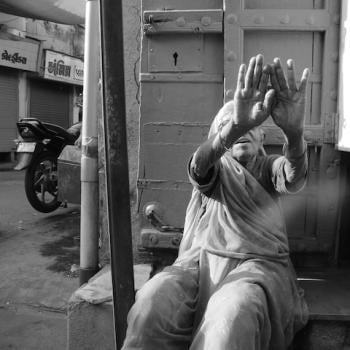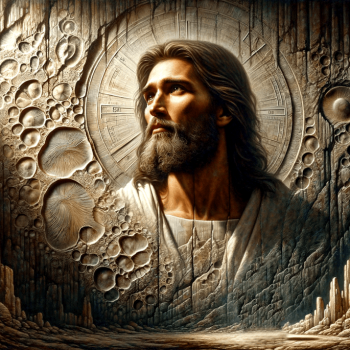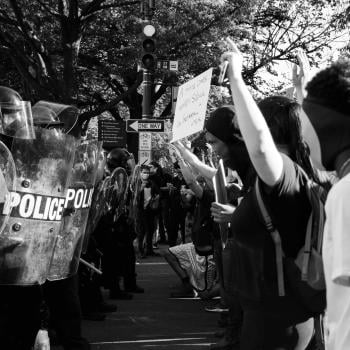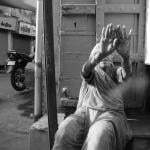
How a Split God-Image Shapes our Inner World
Many people raised in high-control religious environments carry a conflicted image of God—one that is both loving and punishing, intimate and exacting. You may have been told that God’s love was unconditional, but only felt it when you were obedient, pure, or emotionally restrained. Over time, this split God-image doesn’t just shape your beliefs—it shapes your inner world.
This article explores how that divided image of God becomes internalized, leading many to suppress desire, authenticity, and emotional truth in order to feel spiritually safe or worthy of love. Through the lenses of shadow work, attachment theory, and depth psychology, we’ll look at how early spiritual experiences fracture the self—and how healing begins with addressing your God-image.
In shadow work terms, this psycho-spiritual split carries significant weight. After all, the God-image we inherit or construct doesn’t exist in the sky—it lives within us, filtering our needs, wants, and self-expression.
The False Self: Splitting to Connect
“The false self has the task of hiding the true self, which it does by compliance with environmental demands.” — Donald Winnicott
Most Christian traditions present God as both loving and holy. However, in practice, these qualities rarely hold a creative tension. Instead, they often split and become oppositional. At times, God is the cosmic parent who adores you; at others, the stern judge demanding perfection and total obedience.
Early in life, we adapt to this tension. We learn to be “good” in order to avoid punishment and stay connected to love. Yet this adaptation frequently results in a highly cultivated false self—a narrow persona shaped not by freedom, but by fear. From Winnicott’s perspective, the false self arises to preserve connection with a parent (or God) who cannot accept core parts of the true self.
Over time, this fractured parental/divine image morphs into an internal operating system. We carry it into adulthood—not as a theological concept, but as a deeply embedded emotional truth.
We May Not Consciously Believe It—But It Still Shapes Us
By adulthood, many of us may no longer consciously ascribe to a punitive or conditional God-image. We might describe our spirituality as open, expansive, or deconstructed, even reconstructed. Yet despite shedding the theology, we often retain the emotional residue of the God-image we absorbed as children.
That’s because the God-image isn’t just intellectual—it’s felt and unconscious. It’s shaped less by what we heard about God, and far more by our embodied experiences with judgment, powerlessness, and punishment. They said God’s love was unconditional, but did you feel unconditionally loved? Do you feel unconditionally loved now? Was belonging contingent on being good, pure, obedient, or selfless? Did fear form and drive your “relationship” with God? How do you see purity, obedience and selflessness subtly driving your actions and inactions in life?
God-Image Mirrors Early Attachment, Triggers Nervous System
Psychologically, the God-image often reflects our earliest attachment figures. Consequently, even if we no longer believe that “God is always watching and judging,” we may continue to behave as if it were true. We avoid conflict, repress desire, over-function, and live in fear of disappointing others. Trusting love, resting deeply, or being fully ourselves becomes difficult—because some part of us still believes love must be earned.
Doing shadow work around the God-image is not a doctrinal critique—it’s an exploration of how our nervous system and unconscious mind were shaped by what felt emotionally true. Only through this process can we begin to imagine a spiritual life grounded in freedom, wholeness, and authenticity.
How a Split God-Image Shapes Us as Adults
1. Chronic Inner Conflict
You feel torn between what you want and what you “should” want. One part of you longs for freedom, pleasure, and authenticity. Another part shames you, whispering that your desires are dangerous or selfish. This internal tension keeps you on edge, never fully at home within yourself.
2. Moral Perfectionism
You’ve internalized a scorekeeping God, and now you can’t stop trying to earn your place. Even your spiritual growth feels like a performance. You fear mistakes—not because of failure, but because of the looming threat of being unloved. (For more, see: Beyond Self-Help: The Power of Shadow Work.)
3. Fear of Desire
Desire—in the form of sexuality, longing, ambition, or emotional hunger—may feel inherently risky. Perhaps you were taught that desire was the enemy’s tactic to destroy you. As an adult, you now approach your vitality, passions, and creative expression with caution, even suspicion.
4. Difficulty Trusting Love
Unconditional love sounds ideal. Yet if the alternative to not accepting God’s love was eternal torture or separation, that love was highly conditional. This contradiction creates deep psychic confusion. When acceptance comes cloaked in threats, we learn to equate love with fear, compliance, and self-erasure. Consequently, even safe relationships can trigger fears of abandonment or rejection.
5. Head-Heart Split
You can speak eloquently about love, grace, and spiritual ideals—but may not actually feel them. Many people raised in high-control religion become intellectually developed but emotionally malnourished. To survive, they bypass the body and heart. As a result, their beliefs remain disconnected from lived experience.
6. Projecting Authority
You might unconsciously project the split God-image onto mentors, therapists, lovers, or spiritual leaders. Their approval becomes something you crave, while their disapproval—real or imagined—feels devastating.
7. Shame and Guilt-Based Identity
You carry a background hum of shame and guilt. It’s not always tied to specific actions—it just lingers. You often feel that you’ve failed or owe someone something undefined. Even after leaving religion, that shame sticks. It doesn’t just question what you do—it questions your worth.
8. Ambivalent Spirituality
You yearn for spiritual connection but simultaneously tense up around it. Or you crave transcendence yet avoid people, communities, or rituals that could awaken old wounds. You long for the Divine, but also resist it.
A Psychological Lens on a Spiritual Problem
Depth psychology offers a new lens. Carl Jung didn’t treat the God-image as merely a belief system; he saw it as a psychic reality—an inner representation of the Divine that shapes how we live, love, and evolve. When the God-image is split, we split internally to stay safe and maintain connection.
Winnicott’s concept of the false self applies here as well. Many people twist themselves into a spiritual persona just to remain loved by their childhood God-image. Over time, that persona becomes armor, and eventually, a prison.
Attachment theory further illuminates this dynamic. If your attachment to the Divine was insecure—if love was inconsistent or performance-based—you may struggle to trust any secure source of love, human or Divine.
Healing the Split: Integration Over Abandonment
Healing this inner division doesn’t require abandoning God or spirituality. Rather, it draws us to heal the God-image within. It means reclaiming the Divine from your inner critic and restoring the lost union between love and truth, mercy and integrity, presence and permission. The goal isn’t to lose your faith—it’s to make it whole and authentic.
1:1 Shadow Work
If this article resonates and reverberates with you, I’d love to explore working with you in 1:1 Shadow Work. I Offer this through Shadow Work Journeys. Journeys serve as sacred, transformational containers for you to change your life with the support of a trained guide. Schedule a free 30-minute Discovery Call

















